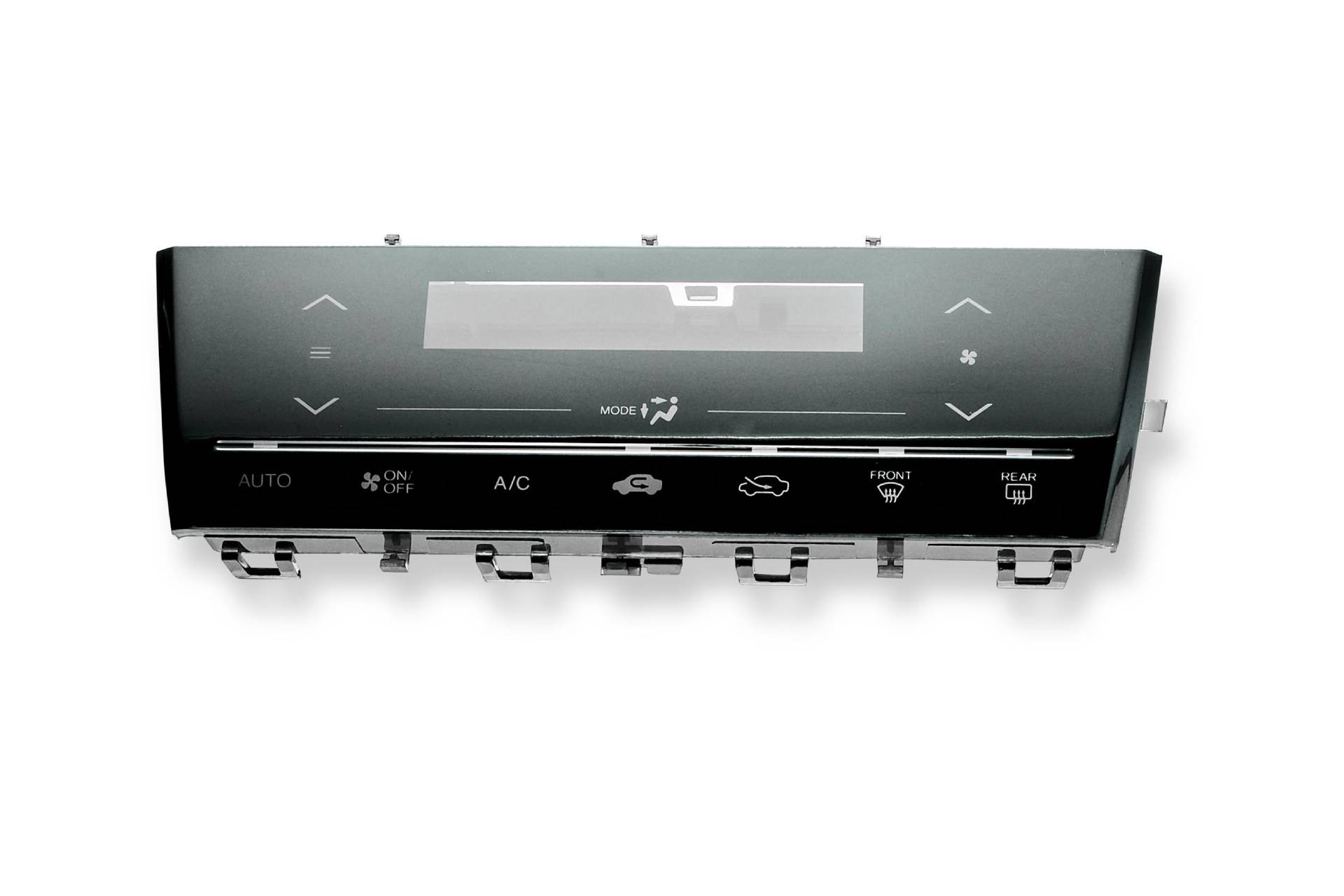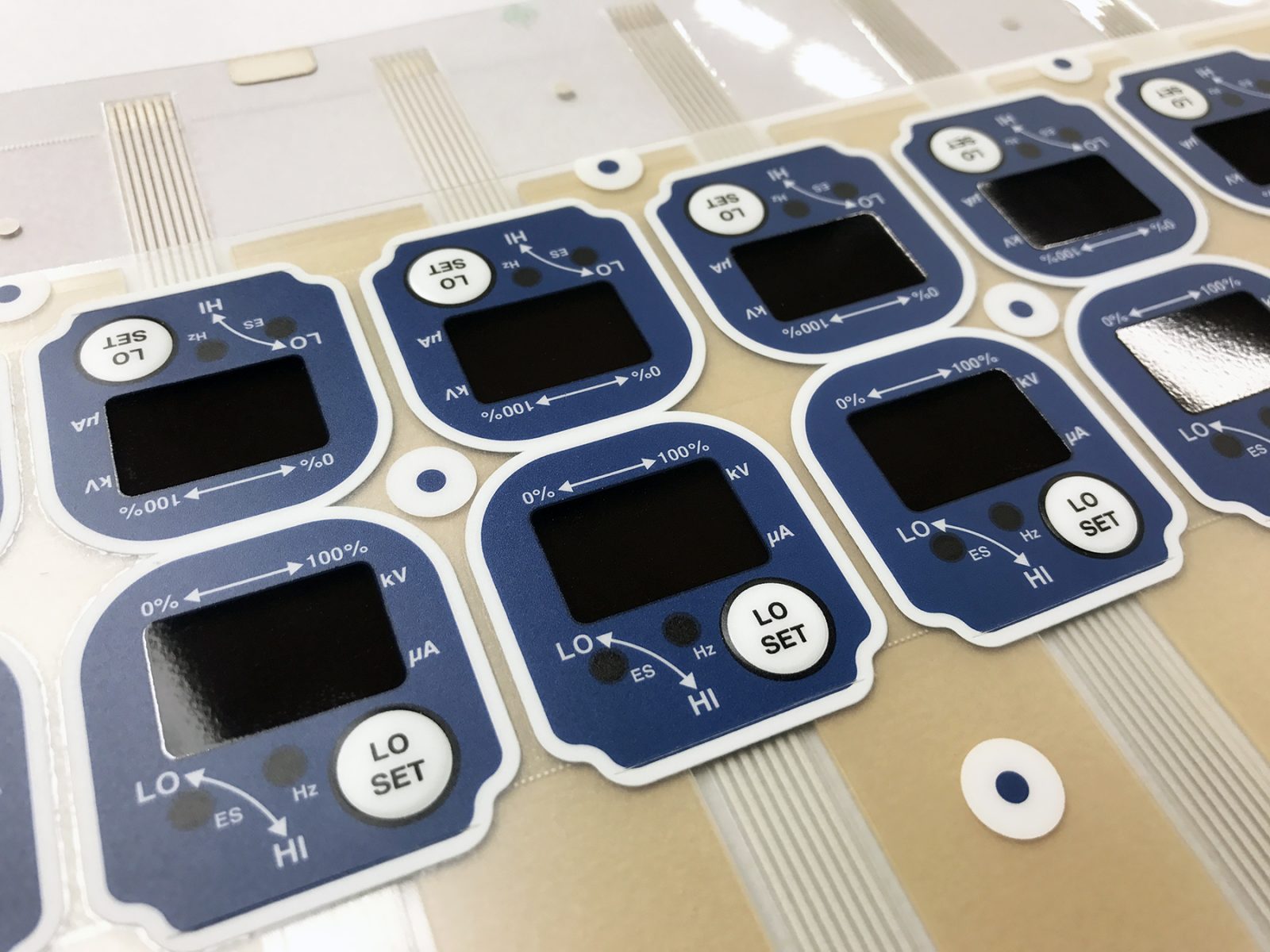Don’t miss the value of working with a proven membrane switch manufacturer for mock-ups.
All About Membrane Layer Switch: Comprehending Its Layout and Capability
When you assume about the control user interfaces in contemporary tools, membrane layer switches frequently come to mind. Allow's discover what collections membrane changes apart from various other control systems.
What Are Membrane Layer Buttons?

Membrane switches can also be personalized relating to form, size, and graphics, enabling manufacturers to create distinct interfaces customized to particular products. On the whole, membrane layer buttons play a considerable duty in enhancing user experience throughout a wide variety of applications.
Just How Membrane Switches Over Work
When you press a key on a membrane switch, it activates an uncomplicated yet reliable system. The leading layer, frequently made from flexible material, pushes down onto a conductive layer beneath it. This activity bridges the gap between conductive traces, completing an electric circuit. As quickly as the circuit shuts, it sends out a signal to the gadget's controller, which interprets your input.
You'll discover that the tactile feedback varies based on the switch style, offering either a soft click or a much more pronounced feedback. As soon as you release the secret, the membrane layer returns to its initial placement, resuming the circuit and quiting the signal. This process happens nearly instantly, guaranteeing a responsive user experience.
Membrane layer switches are preferred as a result of their durability and resistance to dirt and moisture, making them excellent for different applications, from house appliances to clinical gadgets. Understanding this operation aids you appreciate their widespread usage.
Key Elements of Membrane Switches
Comprehending the essential components of membrane buttons is basic for realizing their performance and layout. At the core, you'll find the visuals overlay, which provides the visual interface for individuals. Under that, there's a spacer layer that separates the circuit layers, making sure that they do not make call till pressed. The circuit layer is where the magic happens; it consists of conductive traces that finish the circuit when you push the switch. An additional vital aspect is the sticky backing, allowing the button to abide by surface areas safely. The protective layer guards versus ecological variables and wear, expanding the switch's life expectancy. Each part plays a substantial duty in making certain dependable performance and individual communication. By comprehending these parts, you'll acquire understanding right into exactly how membrane layer switches over operate and their importance in various applications.
Materials Utilized in Membrane Change Style
The efficiency and sturdiness of membrane layer switches greatly depend on the products used in their style. You typically encounter polyester and polycarbonate as main substratums as a result of their superb strength and flexibility. These products withstand scratches and chemicals, making them perfect for demanding atmospheres.
The conductive layers commonly make use of silver or carbon, chosen for their dependability and conductivity. membrane switch manufacturer. Silver provides exceptional performance, while carbon is an economical choice. For the overlay, you might think about a matte or glossy coating, depending upon your aesthetic demands and customer experience
Make certain to choose adhesives that stand up to environmental factors like temperature and humidity. Choosing the right materials will certainly ensure your membrane switch stands the test of time.
Layout Factors To Consider for Membrane Layer Switches
While creating membrane switches, it's vital to take into account different elements that influence their functionality and customer experience. Begin by focusing on the format and switch dimension; ensure they're user-friendly and easy to navigate. Think about the tactile comments you want to give-- will users require an obvious click or a softer touch? Furthermore, consider the materials you'll make use of, as they'll influence longevity and appearances.
Don't forget the graphic design; clear labeling and shade contrast are considerable for exposure. Validate your layout accommodates ecological factors, like dampness or temperature level variations, which can influence efficiency. Ultimately, keep in mind the relevance of screening prototypes with genuine individuals to collect comments and make needed adjustments. This iterative procedure assists you fine-tune the design, verifying it fulfills both functional and aesthetic requirements successfully. By meticulously considering these aspects, you'll develop a membrane layer button that improves functionality and complete satisfaction.
Applications of Membrane Layer Buttons
Membrane layer switches are versatile parts discovered in various applications, from industrial devices to customer electronics. You'll see their influence in equipments that call for long lasting interfaces and in gadgets that take advantage of streamlined layouts. Recognizing these applications aids you value the capability and usefulness of membrane layer switches in day-to-day innovation.
Industrial Equipment Usage
When you're aiming to a knockout post boost the capability of commercial devices, membrane switches supply a reliable remedy that integrates durability with easy to use layout. These switches are excellent for harsh atmospheres, giving resistance to dust, wetness, and chemicals. You'll discover them in control panels for producing devices, HVAC systems, and clinical gadgets, where precision and responsiveness are essential. Their low profile means they fit perfectly into numerous tools, saving beneficial area while maintaining convenience of usage. With adjustable graphics and backlighting alternatives, you can create an user-friendly user interface for operators, boosting efficiency and security. And also, their lengthy lifespan decreases upkeep costs, making like it them a clever financial investment for your commercial applications. Embrace membrane layer buttons to enhance your operations and boost total efficiency.
Consumer Electronics Combination
In the domain name of consumer electronics, membrane switches play a necessary function in boosting user interaction and device capability. Membrane buttons also assure toughness and resistance to dust and moisture, prolonging the lifespan of your electronic devices. By selecting membrane switches, you enhance not just the performance yet likewise the style of your devices, making day-to-day interactions smooth and delightful.
Advantages and Negative Aspects of Membrane Buttons
While membrane layer buttons offer a variety of benefits, they likewise feature some drawbacks that you must think about. One considerable advantage is their compact layout, making them excellent for space-constrained applications. They're additionally economical, supplying a long lasting option with a reduced manufacturing cost. Furthermore, their seamless surface is simple to tidy, improving hygiene in atmospheres like healthcare facilities.

Nonetheless, there are downsides. Membrane layer switches can have a much shorter lifespan compared to mechanical switches, particularly under hefty usage. They can additionally be much less tactile, which might affect individual responses during operation. If damaged, repairing them can be difficult and often needs total substitute. Eventually, their sensitivity to extreme temperature levels and ecological problems may limit their efficiency in particular setups. Balancing these benefits and drawbacks will certainly assist you determine if membrane switches are the right suitable for your project.
Frequently Asked Concerns
How Much Time Do Membrane Layer Switches Usually Last?
Membrane layer switches commonly last between 5 to 10 years, depending upon use and ecological conditions. You'll intend to evaluate factors like wear, exposure to moisture, and temperature fluctuations to gauge their durability effectively.
Can Membrane Changes Be Customized for Details Styles?
Yes, you can customize membrane buttons to fit details styles (membrane switch manufacturer). You'll have the liberty to pick colors, forms, and formats that match your task's requirements, guaranteeing they mix seamlessly with your overall visual
What Is the Cost Variety for Membrane Layer Switch Over Manufacturing?
The price array for membrane button production usually drops between $1 and $10 each, depending upon factors like style complexity, amount, and materials. You can get quotes from producers to locate the very best alternative.

Are Membrane Changes Water Resistant or Resistant?
Membrane buttons can be designed to be water-proof or resistant, depending upon materials utilized and construction methods. If you need them for wet environments, pop over to this web-site ensure you specify those demands throughout the layout process.
Just How Do Membrane Switches Compare to Conventional Buttons?
Membrane layer switches are usually thinner and extra flexible than traditional buttons, providing a sleek layout. They're typically easier to clean up and incorporate, yet may not provide the responsive feedback you're utilized to with mechanical alternatives.
Verdict
